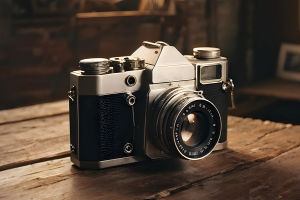There's something electric about capturing motion. Whether it's a basketball player mid-jump, a cyclist speeding around a corner, or a soccer goalie diving for the ball—sports photography is all about freezing those thrilling moments.
We don't just want to see what happened; we want to feel it. But getting the shot right takes more than luck. It takes skill, timing, and a few smart tricks.
Know the Sport You're Shooting
Before we even pick up the camera, we need to understand the sport itself. Every game or activity has its own rhythm. For example, in tennis, big action happens during serves or net play. In football, the energy shifts fast during passes or tackles. When we know the flow, we can anticipate where and when something exciting will happen—and be ready to snap at the perfect moment.
Use a Fast Shutter Speed
This is one of the golden rules. If our shutter speed is too slow, moving subjects will blur. For most sports, we want to start with a shutter speed of at least 1/1000 of a second. This freezes action cleanly, like a runner's foot mid-air or a basketball just leaving a hand. If we're shooting indoors or in low light, we might need to raise the ISO a bit to keep that shutter speed fast.
Focus Like a Pro
Sports move fast—so our focus needs to move just as quickly. Using continuous autofocus helps us track moving subjects without losing sharpness. Pair this with burst mode (taking multiple shots in a row), and we greatly increase our chances of getting that one perfect frame.
Frame the Action Intentionally
Composition matters, even in high-speed photography. We can try the rule of thirds to keep things dynamic—place the subject off-center to show motion direction. For example, if a cyclist is racing left to right, leave some empty space on the right side of the frame. This gives the photo room to “breathe" and adds tension. And don't be afraid to go tight—close-up action shots are often the most powerful.
Capture Emotion, Not Just Motion
The most unforgettable sports photos aren't always of the action—they're of the reaction. A player's face after a goal. A coach shouting on the sideline. A crowd jumping to their feet. These moments tell the story behind the movement. So when there's a break in the game, keep the camera ready—you never know when the magic will happen.
Choose the Right Gear
While it's possible to take great sports photos with almost any camera, certain gear definitely helps. A DSLR or mirrorless camera with fast autofocus and a decent burst rate gives us an edge. As for lenses, zoom lenses like a 70-200mm are great for sideline shooting. But even a 50mm or kit lens can work well if we're close to the action. Don't stress about having the best gear—just learn to use what you have effectively.
Use Light to Your Advantage
Natural light is your best friend. Outdoor sports usually offer great lighting, especially in the morning or late afternoon when the sun is softer. For indoor sports, things get tricky. Gyms or arenas often have low light, so we might need to use a higher ISO and wider aperture to keep things sharp. If lighting is really poor, converting photos to black and white can sometimes help mask grain and make the shot feel more dramatic.
Practice and Review Your Work
Like athletes, we improve with repetition. Review your photos after every shoot. What worked? What was blurry? Was your framing off? Over time, you'll start to notice patterns—and you'll adjust faster in the moment. The best sports photographers are always learning and refining their instincts.
Final Thoughts: What Will You Capture?
Lykkers, if you had your camera at the next big game—or even at your local skate park—what moment would you want to catch? A winning goal? A big celebration? A quiet moment before the storm?
No matter your skill level, you can start capturing action-packed memories right now. So get out there, shoot often, and trust your eye. After all, the best sports photos don't just show movement—they make us feel it.


